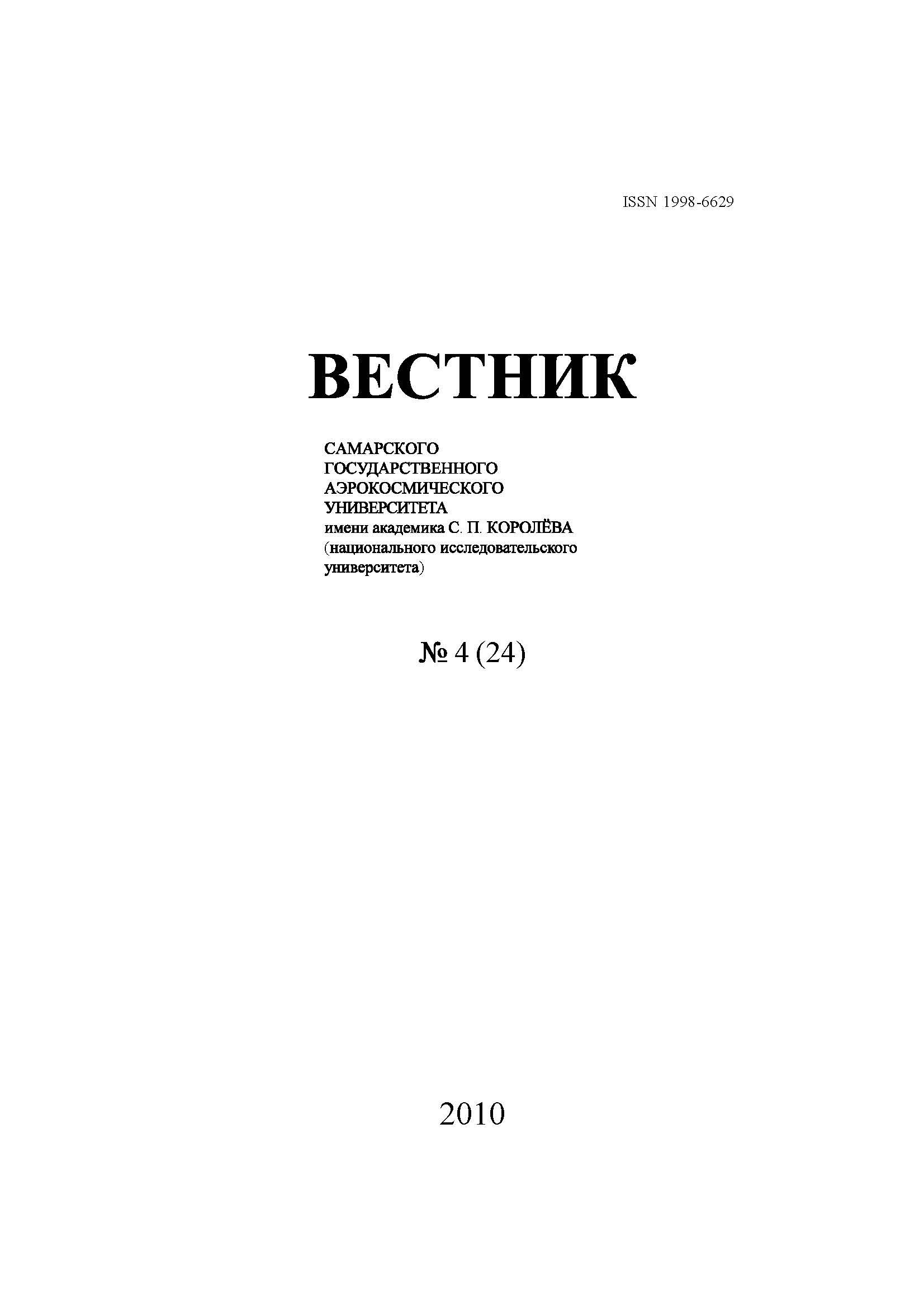Уменьшение размеров фокального пятна в высокоапертурных фокусирующих системах при внесении аберраций
- Авторы: Пелевина Е.А.1, Хонина С.Н.2
-
Учреждения:
- Самарский государственный аэрокосмический университет имени академика С.П. Королёва (национальный исследовательский университет)
- Институт систем обработки изображений РАН, Самара
- Выпуск: Том 9, № 4 (2010)
- Страницы: 257-268
- Раздел: УПРАВЛЕНИЕ, ВЫЧИСЛИТЕЛЬНАЯ ТЕХНИКА И ИНФОРМАТИКА
- URL: https://journals.ssau.ru/vestnik/article/view/967
- DOI: https://doi.org/10.18287/2541-7533-2010-0-4(24)-257-268
- ID: 967
Цитировать
Полный текст
Аннотация
Показана возможность управления вкладом компонент векторного электрического поля в фокальной области с помощью дополнительного введения пропускающих функций, аналогичных волновым аберрациям с целью уменьшения поперечного размера центрального светового пятна фокусирующей системы с высокой числовой апертурой. На основе анализа матрицы поляризационного преобразования высокоапертурной линзы и численного моделирования фокусирующей системы в приближении Дебая доказана возможность уменьшения размера фокального пятна, а также теневой области. Показана эффективность использования пропускающей функции, согласованной с полиномами Цернике для формирования субволнового центрального пятна: для линейной поляризации получено вытянутое фокальное пятно шириной по уровню полуспада интенсивности вдоль оси поляризации FWHM(-) = 0,24λ, для радиальной поляризации получено круглое пятно диаметром по полуспаду интенсивности FWHM = 0,32λ и для круговой поляризации FWHM = 0,35λ. Для азимутальной поляризации наличие вихревой фазовой функции первого порядка позволяет получить в общей интенсивности круглое центральное световое пятно меньше дифракционного предела: FWHM = 0,46λ с низким уровнем интенсивности в боковых лепестках.
Ключевые слова
Об авторах
Е. А. Пелевина
Самарский государственный аэрокосмический университет имени академика С.П. Королёва (национальный исследовательский университет)
Автор, ответственный за переписку.
Email: yekaterina.pelevina@gmail.com
Студент
РоссияС. Н. Хонина
Институт систем обработки изображений РАН, Самара
Email: khonina@smr.ru
Доктор физико-математических наук, профессор
Ведущий научный сотрудник
РоссияСписок литературы
- Quabis, S. Focusing light to a tighter spot // Opt. Commun. - 2000. - Vol. 179. - P. 1-7.
- Dorn, R. Sharper focus for a radially polarized light beam // Phys. Rev. Lett. - 2003. - Vol. 91. - P. 233901.
- Sheppard, C.J.R. Annular pupils, radial polarization, and superresolution / Colin J. R. Sheppard and Amarjyoti Choudhury // Appl. Opt. - 2004. - Vol. 43, Issue 22. - P. 4322-4327.
- Khonina, S.N. Investigation of axicon application in high-aperture focusing system / S.N. Khonina, S.G. Volotovsky // Computer Optics. – 2010. – Vol. 34, N1. – P. 35-51. – [in Russian].
- Khonina, S.N. Control by contribution of components of vector electric field in focus of a high-aperture lens by means of binary phase structures / S.N. Khonina, S.G. Volotovsky // Computer Optics. – 2010. – Vol. 34, N 1. – P. 58-68. – [in Russian].
- Visser, T.D. Spherical aberration and the electromagnetic field in highaperture systems / T.D. Visser, S.H. Wiersma // J. Opt. Soc. Am. A. - 1991. -Vol. 8, N 9. - P. 1404-1410.
- Visser, T.D. Diffraction of converging electromagnetic waves / T.D. Visser, S.H. Wiersma // J. Opt. Soc. Am. A. - 1992. - Vol. 9, N 11. - P. 2034-2047.
- Braat, J.J.M. Extended Nijboer–Zernike approach to aberration and birefringence retrieval in a high-numerical-aperture optical system / J.J.M. Braat, P. Dirksen, A.J.E.M. Janssen , S. van Haver, A.S. van de Nes // Opt. Soc. Am. A. - 2005. - Vol. 22, N 12. - P. 2635-2650.
- Braat, J.J.M. Energy and momentum flux in a high-numerical-aperture beam using the extended Nijboer-Zernike diffraction formalism / J.J.M. Braat, S. van Haver, A.J.E.M. Janssen, P. Dirksen // Journal of the European Optical Society. - 2007. - Rapid Publications 2. 07032. - P. 1-13.
- Rao, R. Field confinement with aberration correction for solid immersion lens based fluorescence correlation spectroscopy / R. Rao, J. Mitic, A. Serov, R.A. Leitgeb, T. Lasser // Optics Communications. - 2007. – Vol. 271. - P. 462–469.
- Singh, R.K. Effect of primary spherical aberration on high-numericalaperture focusing of a Laguerre-Gaussian beam / R.K. Singh, P. Senthilkumaran, K. Singh // J. Opt. Soc. Am. A. - 2008. - Vol. 25, N 6. - P. 1307-1318.
- Singh, R.K. Tight focusing of vortex beams in presence of primary astigmatism / R.K. Singh, P. Senthilkumaran, K. Singh // J. Opt. Soc. Am. A. - 2009. - Vol. 26, N 3. - P. 576-588.
- Singh, R.K. Focusing of linearly-, and circularly polarized Gaussian background vortex beams by a high numerical aperture system afflicted with third-order astigmatism / R.K. Singh, P. Senthilkumaran, K. Singh // Optics Communications. - 2008. – Vol. 281. - P. 5939–5948.
- Singh, R.K. Structure of a tightly focused vortex beam in the presence of primary coma / R.K. Singh, P. Senthilkumaran, K. Singh // Optics Communications. - 2009. – Vol. 282. - P. 1501–1510.
- Born, M. Principlies of Optics / M. Born, E. Wolf - Pergamon Press, Oxford, 1968.
- Sheppard, C.J.R. Orthogonal aberration functions for high-aperture optical systems / Colin J.R. Sheppard // J. Opt. Soc. Am. A. - 2004. - Vol. 21, N 5. - P. 832-838.
- Richards, B. Electromagnetic diffraction in optical systems. II. Structure of the image field in an aplanatic system / B. Richards and E. Wolf // Proc. R. Soc. London Ser. A. - 1959. - Vol. 253. - P. 358–379.
- Khonina, S.N. Possibility analysis of subwavelength light localization and focus extending for high-aperture focusing system using vortical phase transmission function / S.N. Khonina, S.G. Volotovsky // Electromagnetic waves and electronic systems. - 2010. - N 11. - P. 6-25. – [in Russian].
- Grosjean, T. Photopolymers as vectorial sensors of the electric field / T. Grosjean and D. Courjon // Optics Express. - 2006. - Vol. 14, Issue 6. - P. 2203-2210.
Дополнительные файлы





















